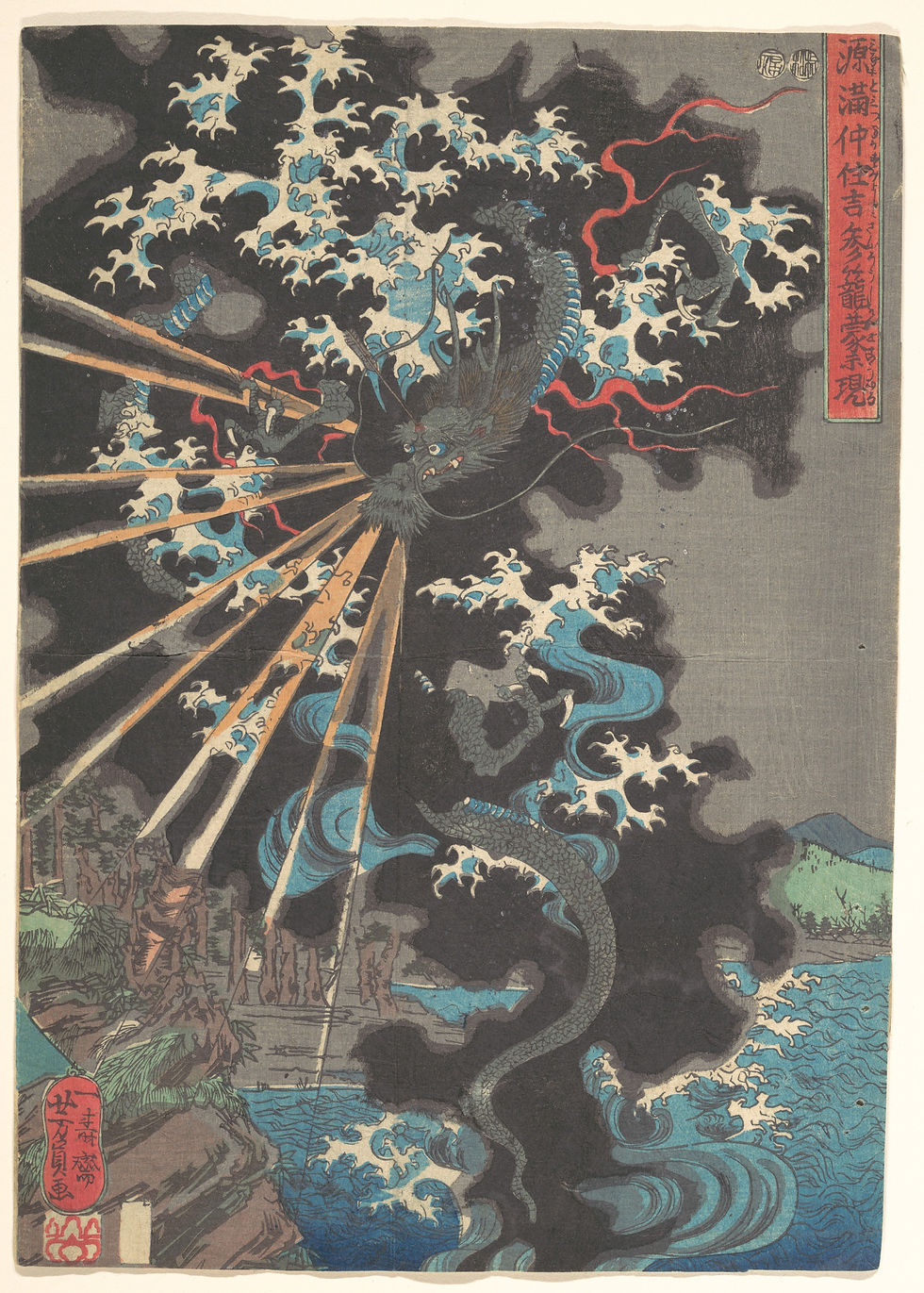Japanese Prints and the Art of the Background: When the Backdrop Tells the Story
- Artmediary

- Jul 7
- 2 min read
Japanese woodblock prints, or ukiyo-e ("images of the floating world"), have long fascinated collectors and art lovers alike for their graceful lines, harmonious colors, and poetic subjects. Yet beyond the immediate beauty of central figures—be they elegant courtesans, kabuki actors, or views of Mount Fuji—there lies a frequently overlooked but essential component: the background.
In this article, Artmediary delves into an unconventional perspective: how the treatment of the background (ura, literally "the reverse") in Japanese prints reveals deeper layers of meaning, balancing symbolism, narrative, and spiritual resonance.

The Background as a Narrative Space
In ukiyo-e, the background is never just decorative. It acts as a silent character, a space where emotion, weather, the seasons, or even the scene’s moral undertone can be expressed. In works by Katsushika Hokusai or Utagawa Hiroshige, stormy skies, autumn mists, or spring snows shape the atmosphere as profoundly as the figures themselves. A lone bridge, a blooming cherry tree, or a boat on the horizon often tells as much as the subject in the foreground.
A Symbolic, Encoded Language
Backgrounds in ukiyo-e are frequently rich with precise cultural codes, often invisible to Western viewers. An extinguished lantern might suggest death or absence; a wooden fence can symbolize the boundary between the world of the living and the spiritual realm. In the dramatic actor portraits by Sharaku, the background is reduced to an abstract field, enhancing the emotional expression in the actor’s face.

An Art of Layered Planes
Unlike Western linear perspective, which organizes space into a single depth field, Japanese prints embrace a layering of horizontal planes. This approach recalls puppet theater or emaki picture scrolls: each spatial band narrates its own strand of reality, and the background becomes a site of temporal layering.
A Market Indicator for Connoisseurs
For collectors, the background has become an indicator of refinement and rarity. Ukiyo-e with elaborately printed backdrops—using techniques such as embossing (karazuri) or mica highlights (kirazuri)—command special attention. Works by Torii Kiyonaga or Chōbunsai Eishi, featuring delicate urban settings behind female figures, are increasingly sought after, particularly in niche auction circles.

Suggested Academic Readings
Jacqueline Pigeot, La Vision bouddhique dans l’estampe japonaise, Picquier Editions, 2003
Christophe Marquet, Estampes japonaises: images d’un monde éphémère, Hazan, 2008
Annie Mollard-Desfour, La Couleur et ses symboles dans l’estampe japonaise, CNRS Éditions, 2015
Matthi Forrer, Hokusai: Prints and Drawings, Prestel, 1991
Béatrice Hernad, L’estampe japonaise, Éditions du Chêne, 2010
Why Invest in Japanese Prints Today?
With their deep cultural roots, timeless aesthetic, and intricate symbolism, ukiyo-e are increasingly capturing the attention of investors and enthusiasts alike. At ArtMediary, we guide our clients in acquiring, assessing, and selling rare prints through a trusted network of experts and partner galleries.
Japanese prints are an art of nuance—and sometimes, the most meaningful detail is in the background.



Comments